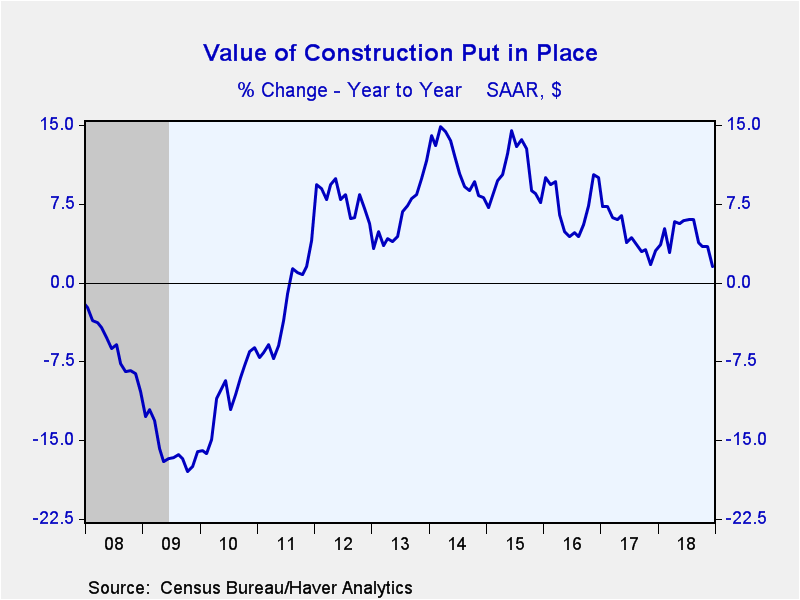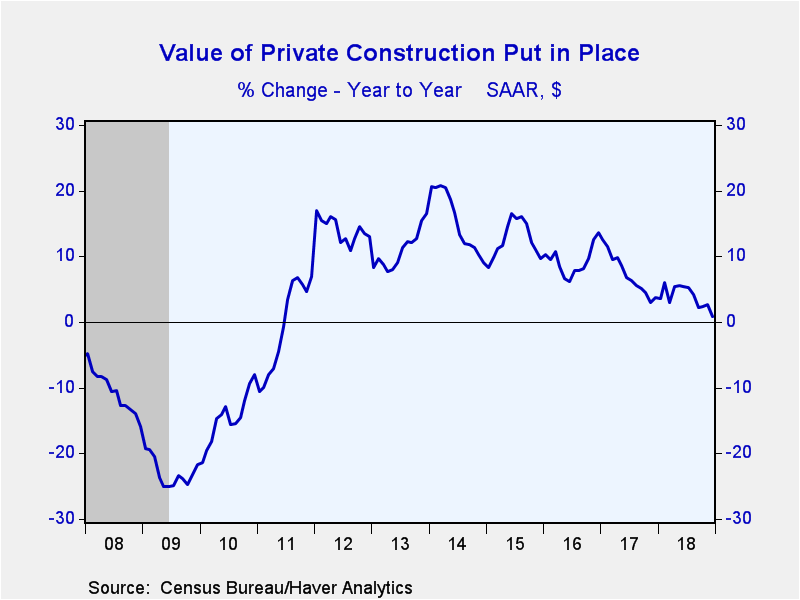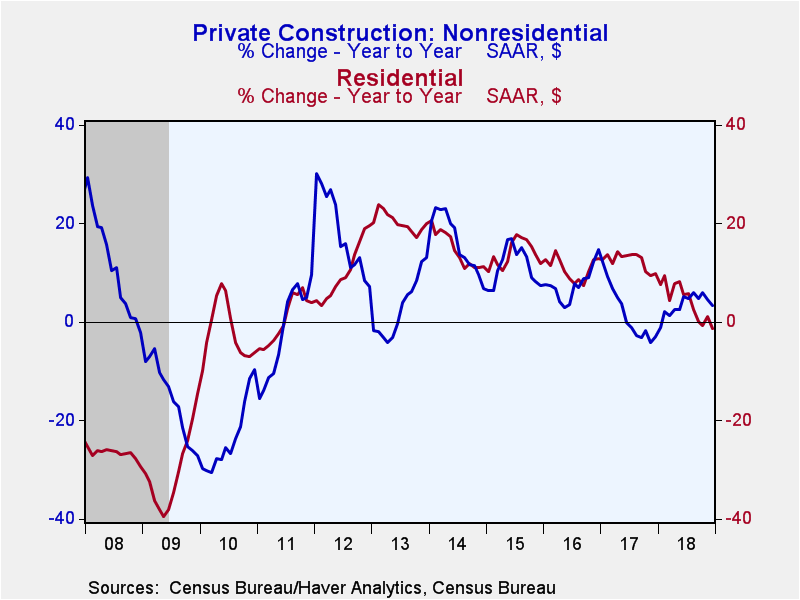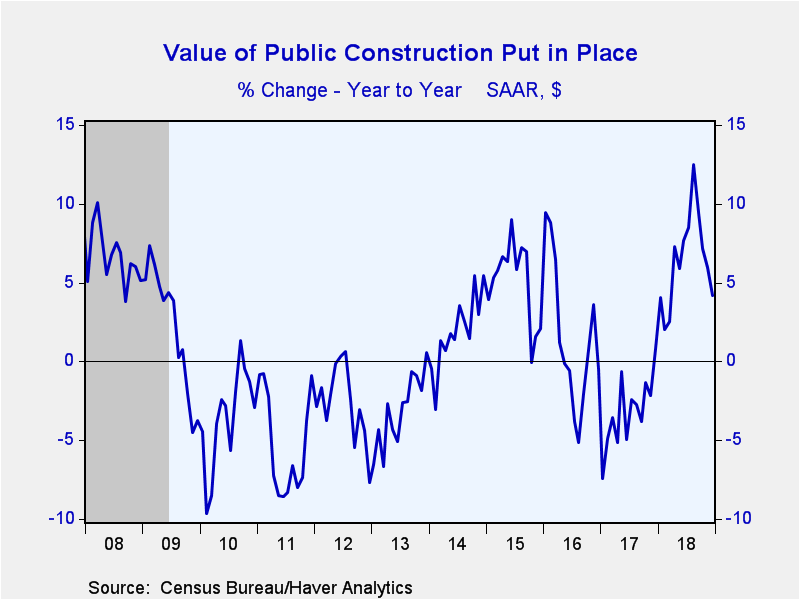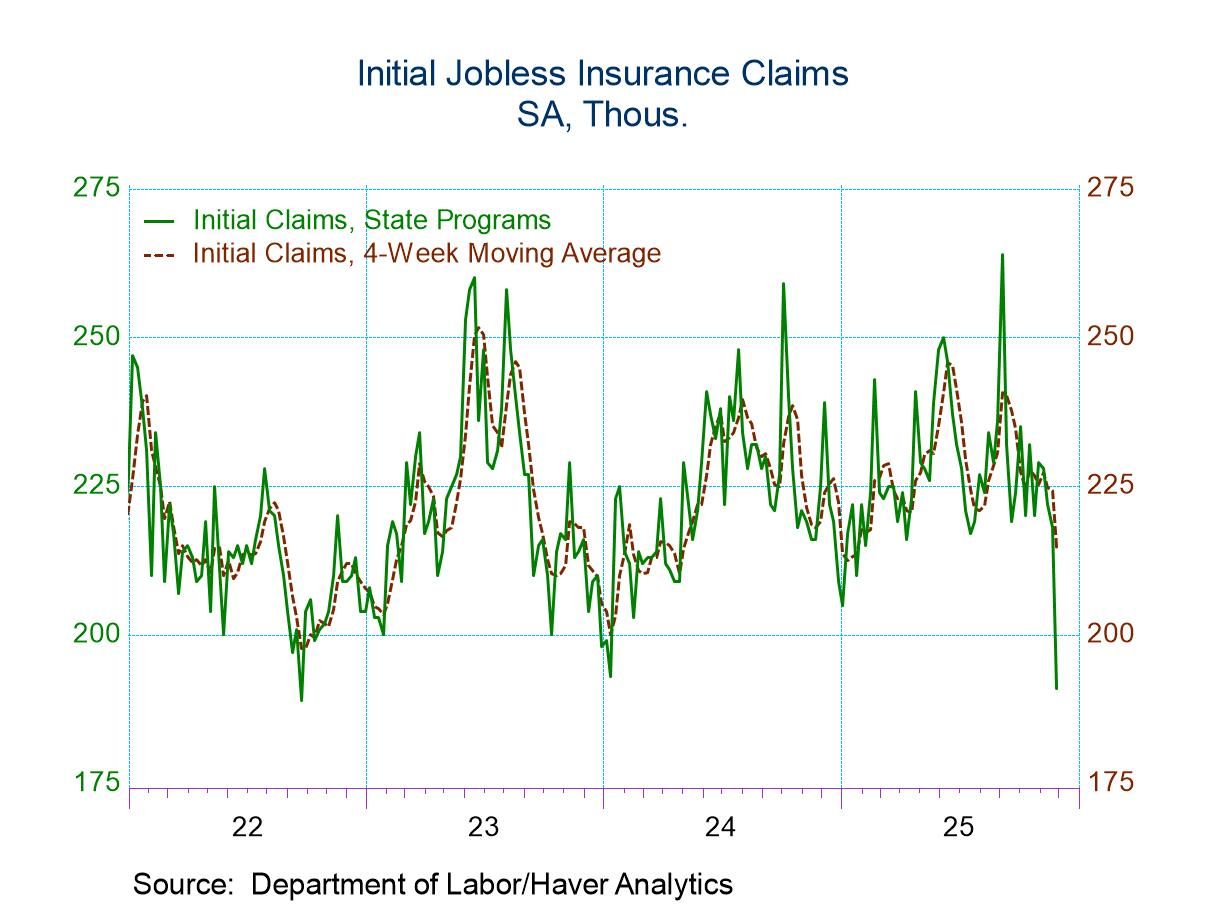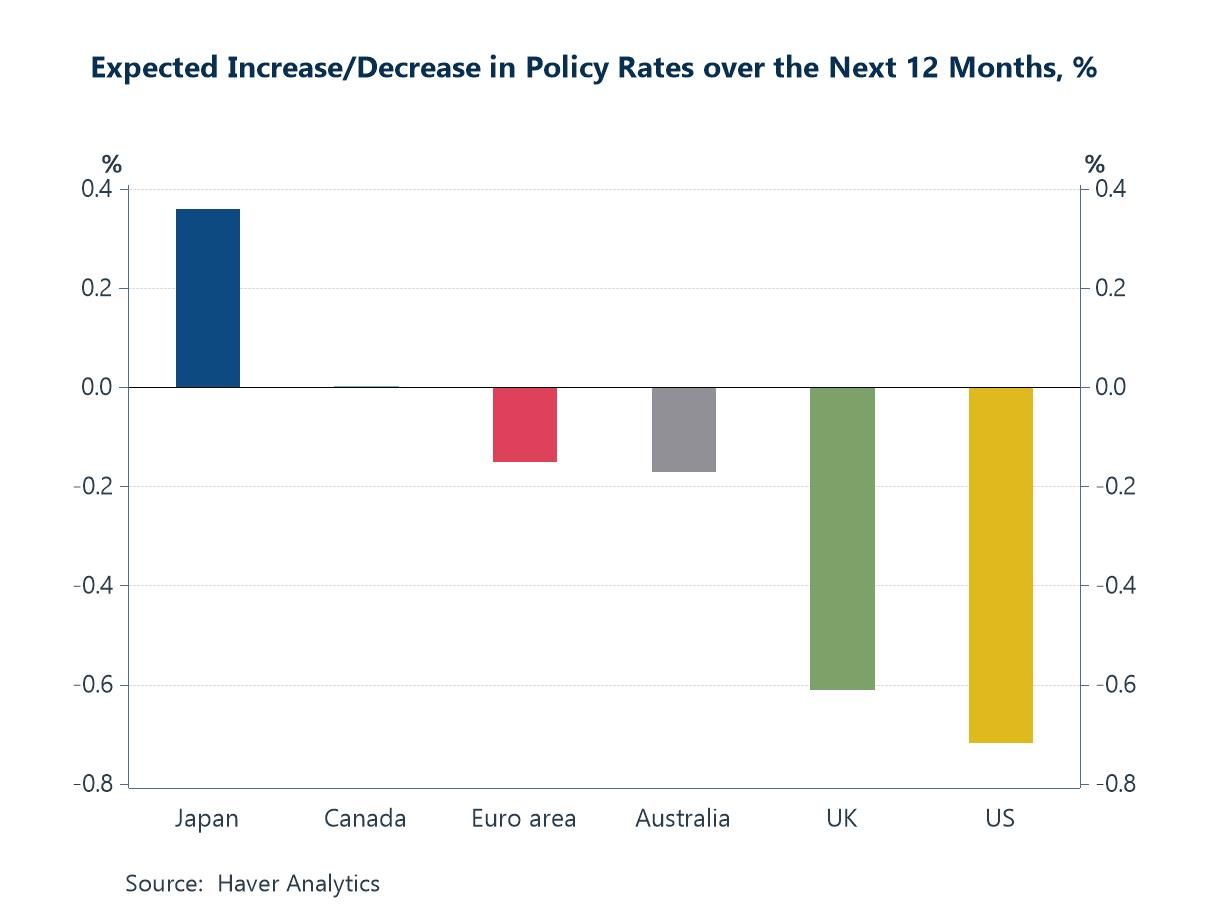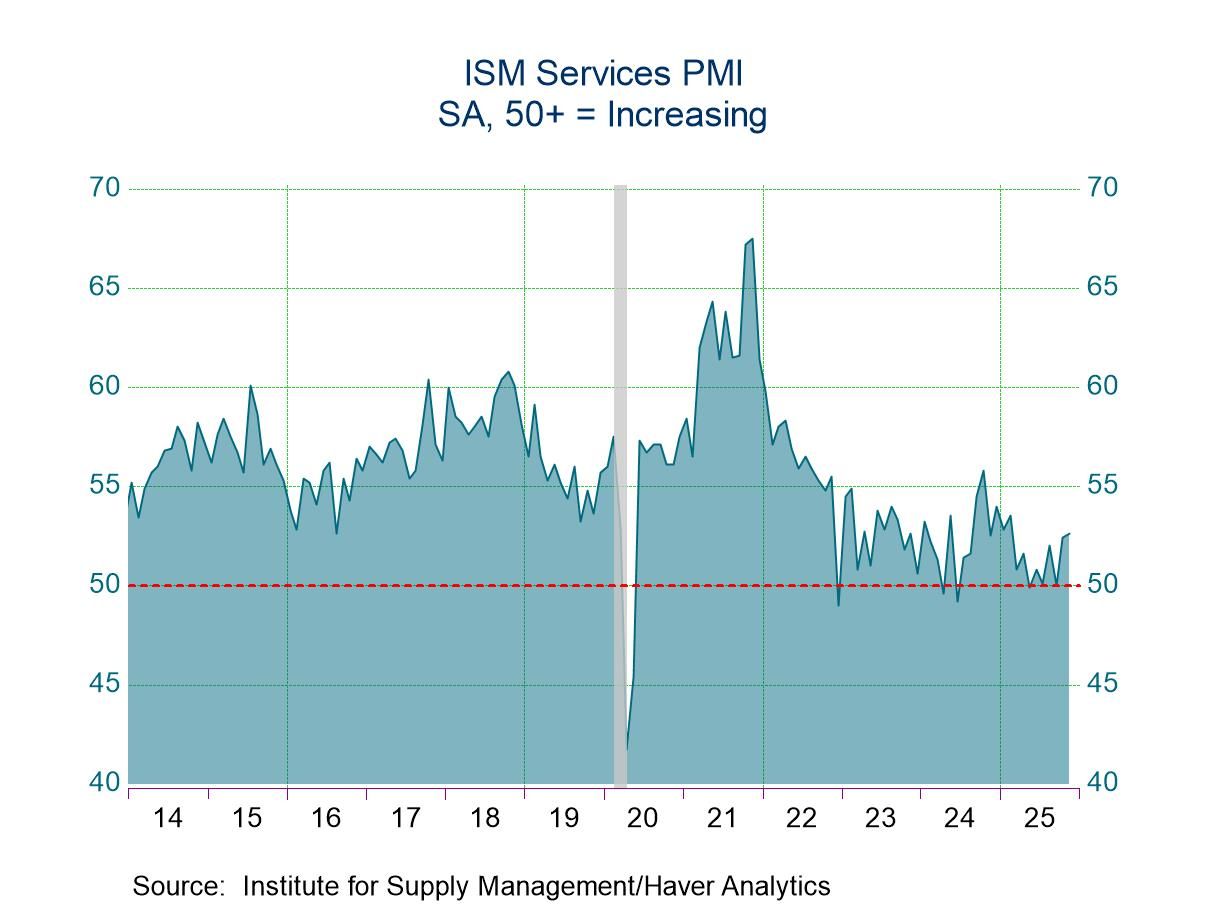 Global| Mar 04 2019
Global| Mar 04 2019U.S. Construction Spending Reverses Earlier Increase
by:Tom Moeller
|in:Economy in Brief
Summary
The value of construction put-in-place declined 0.6% (+0.8% y/y) during December. It reversed an unrevised 0.8% November gain. A 0.2% rise had been expected in the Action Economics Forecast Survey. During all of 2018, construction's [...]
The value of construction put-in-place declined 0.6% (+0.8% y/y) during December. It reversed an unrevised 0.8% November gain. A 0.2% rise had been expected in the Action Economics Forecast Survey. During all of 2018, construction's value rose 4.1%, the weakest increase since a 2011 decline.
The value of private construction activity also fell 0.6% at yearend and was little changed y/y. The decline was the first in three months and was led by a 1.4% drop (-3.5% y/y) in the value of residential building, the fourth decline in five months. Single-family construction dropped 3.2% (-5.2% y/y), the largest of seven consecutive months of decline. The value of improvements eased 0.4% (-3.9% y/y) after strengthening 12.7% in November. Multi-family construction rose another 3.1% (5.3% y/y) after three months of strong increase. Nonresidential building activity improved 0.4% (3.8% y/y) after a 1.1% decline. Office construction was unchanged (8.2% y/y) and commercial construction fell 1.0% (-4.5 y/y). Factory sector building rose 1.7% (6.6% y/y).
The value of public construction eased 0.6% (+4.2% y/y). The 6.6% rise during all of last year was the strongest in ten years. Highway & street construction, which accounts for roughly one-third of public sector spending, declined 0.9% (+0.5% y/y), the fifth decline in six months. Office building increased 6.4% (13.7% y/y) and commercial construction improved 6.1%, up by roughly one-third y/y. Educational facility construction held steady (8.7% y/y).
The construction spending figures, some of which date back to 1946, are in Haver's USECON database. The expectations reading can be found in the AS1REPNA database.
| Construction Put in Place (SA, %) | Dec | Nov | Oct | Dec Y/Y | 2018 | 2017 | 2016 |
|---|---|---|---|---|---|---|---|
| Total | -0.6 | 0.8 | 0.2 | 0.8 | 4.1 | 4.5 | 7.0 |
| Private | -0.6 | 1.3 | 0.1 | -0.0 | 3.4 | 7.1 | 9.2 |
| Residential | -1.4 | 3.4 | -0.7 | -3.5 | 3.3 | 12.4 | 10.7 |
| Nonresidential | 0.4 | -1.1 | 1.1 | 3.8 | 3.5 | 1.3 | 7.7 |
| Public | -0.6 | -1.0 | 0.6 | 4.2 | 6.6 | -3.2 | 0.7 |
Tom Moeller
AuthorMore in Author Profile »Prior to joining Haver Analytics in 2000, Mr. Moeller worked as the Economist at Chancellor Capital Management from 1985 to 1999. There, he developed comprehensive economic forecasts and interpreted economic data for equity and fixed income portfolio managers. Also at Chancellor, Mr. Moeller worked as an equity analyst and was responsible for researching and rating companies in the economically sensitive automobile and housing industries for investment in Chancellor’s equity portfolio. Prior to joining Chancellor, Mr. Moeller was an Economist at Citibank from 1979 to 1984. He also analyzed pricing behavior in the metals industry for the Council on Wage and Price Stability in Washington, D.C. In 1999, Mr. Moeller received the award for most accurate forecast from the Forecasters' Club of New York. From 1990 to 1992 he was President of the New York Association for Business Economists. Mr. Moeller earned an M.B.A. in Finance from Fordham University, where he graduated in 1987. He holds a Bachelor of Arts in Economics from George Washington University.


